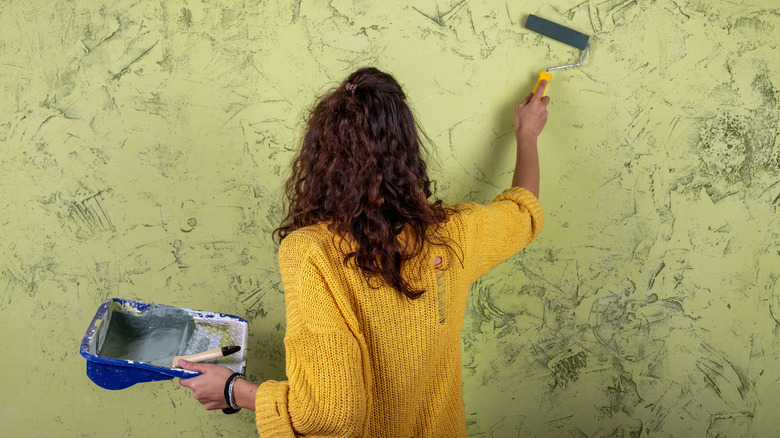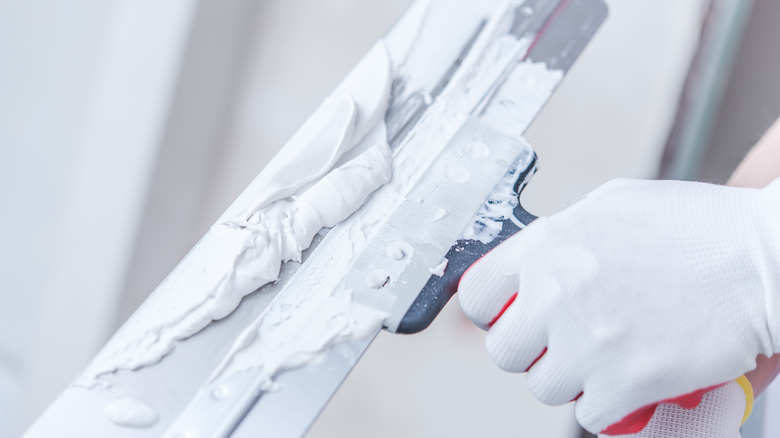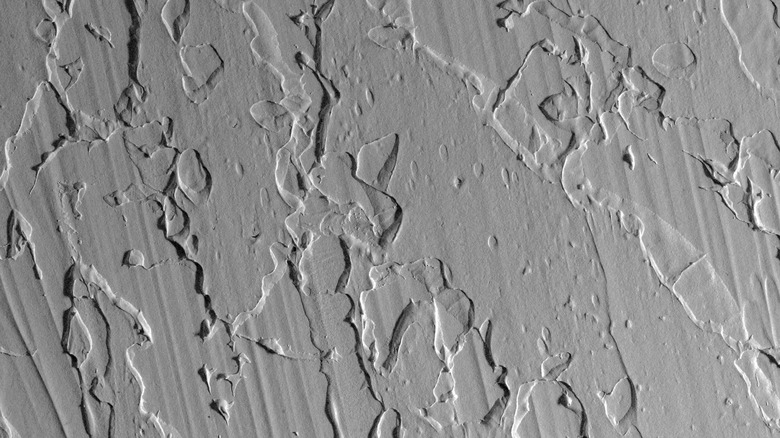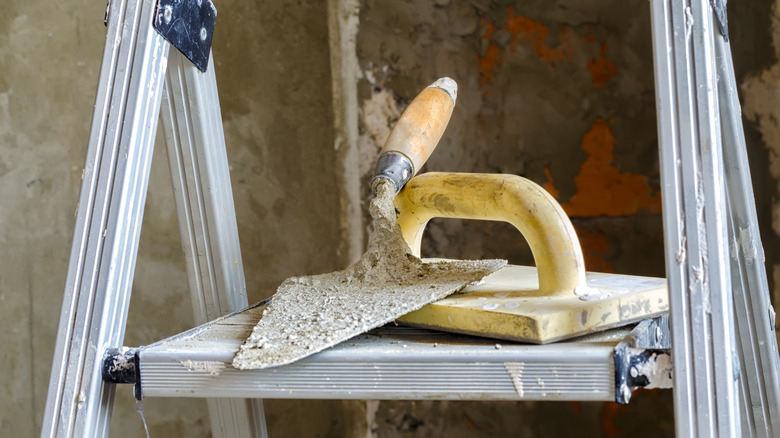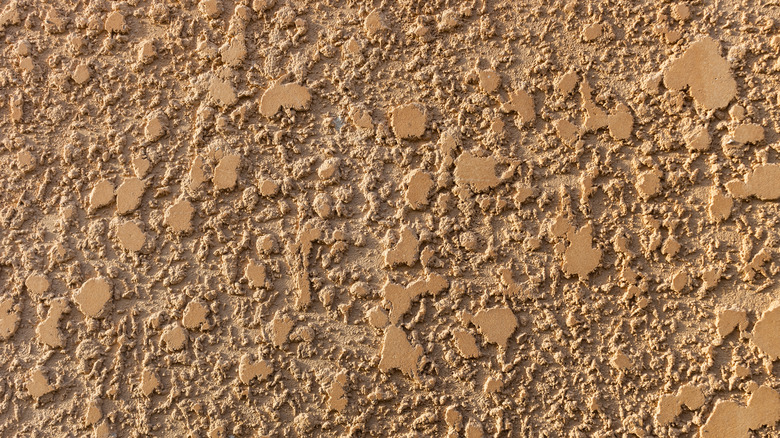Slap Brush Walls Vs. Knockdown Walls: What's The Difference?
If you want to shake things up with a different kind of look in your home, there are multiple types of drywall textures that can be applied to the wall or ceiling. They act as a unique finish and can also hide any small imperfections under the surface. For those that love DIY projects, the process of applying a drywall texture can be a fun task to take on!
Knockdown is a common term that involves applying a thin layer of drywall compound first and then knocking it down or flattening it, states Family Handyman. This causes a more subdued effect than the original texture that was applied. The more common slap brush texture involves "slapping" drywall compound in layers to form various patterns and designs. This type is also referred to as "stomp brush" or "crow's foot" because of how the brush is used on the surface to create designs.
How does the appearance differ?
The slap brush technique looks like spread-out lines due to the bristles of the fanned-out brush that is typically used. The appearance of a slap brush wall will always vary because it depends on the application process. The brush used, how thick the mud is, and how it's layered all contribute to how the texture comes out, notes The Balance Small Business.
The knockdown technique requires creating a texture with a brush or other tool and then flattening the pattern with a drywall knife while it's still wet. The appearance will vary depending on the type of tool used, the angle it's held at, the number of layers applied and several other factors, explains This Old House. With both textures, you are in control of the finished product and can have fun with the process.
What are the differences in cost?
The tools and drywall compound needed for both textures are quite cheap if you are keen to try it yourself. Alternatively, The cost for having a textured surface professionally applied is based on several factors such as the dimensions of the surface, the style of texture you want, how it will be applied, and if the surface has been painted or textured before.
Home Guide says a knockdown texture on a ceiling can cost about $1 to $2.50 per square foot or $500 to $1,250 for every 500 square feet. For the average bedroom, expect to pay between $70 and $200 for one wall, and $280 to $800 for the whole room.
How easy it to apply texture?
The slap brush technique is pretty straightforward. The Balance Small Business recommends buying drywall compound that is already mixed, as this is the easiest to apply. Mix the compound with a small amount of water to thin it out. Apply the mud mixture lightly and evenly and then stamp the surface using a paint roller or a textured brush with the right bristles for the look you want. The Balance Small Business warns that it might be a little tricky to get it perfect the first time. Practicing on a small piece of cardboard or drywall before working on your actual wall can help you to get the texture you want.
Nailing the knockdown technique needs a little more attention and effort. After you apply a texture to your wall, you'll have to flatten the drywall mixture as it dries. The wait time before you start to flatten the bumps is key in this part of the process, says Bob Vila, as the correct drying time will help avoid lines.
Recommended uses
If you're looking for something authentic or that has a personal touch, the slap brush is a good choice, as it resembles older plastering techniques that were applied by hand, according to The Balance Small Business. Additionally, if you're only looking to get your ceiling covered, this is the most common option.
The knockdown texture provides a contemporary feel and will look good in a living room, dining room, or kitchen, says Farm Food Family. It is a common choice for renovations because it covers up any flaws in walls, can be seen more clearly, and is easy to clean, says Drywall 101. The process of applying the knockdown texture is, however, messier and needs more attention in terms of knowing when to start the flattening, so it's recommended for more experienced DIY enthusiasts.
